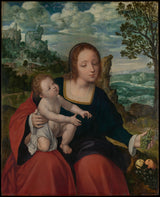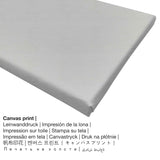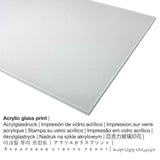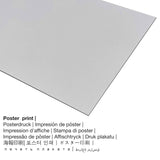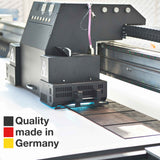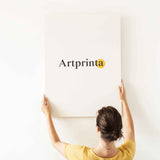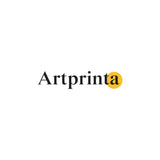Quentin Metsys, 1540 - Ndị fọdụrụ na ụgbọ elu banye Egypt - ọmarịcha nka
Ụtụ gụnyere. Mbupu gbakọrọ na ndenye ọpụpụ.
"Ndị fọdụrụ na ụgbọ elu banye Egypt" from the Dutch painter Quentin Metsys dị ka oyiri nka pụrụ iche gị
E ji see ihe osise a Quentin Metsys. The version of the painting had the following following size of 37 1/2 x 30 1/4 in (95,3 x 76,8 cm). Mmanụ na osisi was applied by the painter as the medium of the artpiece. This artpiece can be viewed in in the The Metropolitan Museum of Art's digital collection, which is one of the world's largest and finest art museums, which includes more than two million works of art spanning five thousand years of world culture, from prehistory to the present and from every part of the globe.. With courtesy of: The Metropolitan Museum of Art, New York, The Friedsam Collection, Bequest of Michael Friedsam, 1931 (public domain). Creditline of the artwork: The Friedsam Collection, Bequest of Michael Friedsam, 1931. What is more, the alignment of the digital reproduction is Eserese na a akụkụ ruru nke 1: 1.2, nke pụtara na ogologo bụ 20% mkpụmkpụ karịa obosara.
Ozi mgbakwunye sitere na The Metropolitan Museum of Art (© Nwebiisinka - The Metropolitan Museum of Art - Museumlọ ihe ngosi nka nke Obodo)
The Virgin and Child, painted by a follower of Massys, reflect the influence of Italian painting, particularly the classical figure types favored by Leonardo da Vinci. The landscape, however, ascribed to the Master of the Liège Disciples at Emmaus, sets the stage for the expansive views in Netherlandish paintings of the later sixteenth century.
Ozi nka ahaziri
| Aha nka: | "Ndị fọdụrụ na ụgbọ elu n'Ijipt" |
| Nhazi nke ọrụ nka: | sere |
| Otu sara mbara: | nka ochie |
| Century: | 16th narị afọ |
| Emepụtara na: | 1540 |
| Afọ nka: | 480 afọ |
| Ọkara nke ihe osise izizi: | mmanụ n'elu osisi |
| Akụkụ ihe osise izizi: | 37 1/2 x 30 1/4 na (95,3 x 76,8 cm) |
| Ụlọ ihe ngosi nka / mkpokọta: | Museumlọ ihe ngosi nka nke Obodo |
| Ebe ngosi nka: | New York City, New York, Njikota Obodo Amerika |
| website: | www.metmuseum.org |
| Licensedị ikike: | ngalaba ọha |
| Site n'aka: | Ụlọ ihe ngosi nka nke Metropolitan, New York, mkpokọta Friedsam, Arịrịọ nke Michael Friedsam, 1931 |
| kreditline ọrụ nka: | Nchịkọta Friedsam, Arịrịọ nke Michael Friedsam, 1931 |
Nyocha ngwa ngwa nke onye na-ese ihe
| Ihe nkiri: | Quentin Metsys |
| okike nke onye nka: | nwoke |
| Obodo onye nka: | Dutch |
| Ọrụ onye na-ese ihe: | onye na-ese ihe |
| Mba onye si: | mba netherland |
| Nkewa onye nka: | nna ukwu ochie |
| Akwụsị: | 64 afọ |
| Afọ amụrụ: | 1466 |
| Nwụrụ n'afọ: | 1530 |
Nweta nhọrọ ihe ebipụta nka ịchọrọ
Maka ngwaahịa ọ bụla anyị na-enye ihe dị iche iche & nha. Ya mere, anyị na-enye gị ohere ịhọrọ n'ime nhọrọ ndị a:
- Mbipụta ọla (aluminium dibbond): An Aluminium Dibond print is a material with an impressive depth effect. Its non-reflective surface creates a modern look. A direct Direct Print on Aluminum Dibond is the excellent introduction to fine reproductions with aluminum. For our Direct Aluminium Dibond print, we print the artpiece on the aluminium composite white-primed surface. The print on Aluminum Dibond is the most popular entry-level product and is a stylish way to showcase fine art prints, as it draws focus on the artwork.
- Akwụkwọ mmado ebipụtara (akwa akwa akwa): The Artprinta poster print is a UV printed flat canvas paper with a slightly roughened surface structure. Please keep in mind, that depending on the size of the poster we add a white margin of approximately 2-6cm round about the painting, which facilitates the framing with your custom frame.
- Kwaaji: A printed canvas mounted on a wooden stretcher frame. The advantage of canvas prints is that they are relatively low in weight. That means, it is easy and straightforward to hang up the Canvas print without any wall-mounts. Therefore, a canvas print is suited for all kinds of walls.
- Mbipụta iko acrylic na-egbuke egbuke (nke nwere ezigbo mkpuchi iko): An acrylic glass print, which is sometimes referred to as a an art print on plexiglass, will convert the original artwork into brilliant wall decoration and forms a good alternative option to canvas or dibond prints. The work of art is manufactured with the help of state-of-the-art UV direct printing technology. With an acrylic glass fine art print contrasts plus minor image details will be exposed because of the fine gradation.
Ozi ndabere ngwaahịa
| Ụdị ngwaahịa: | ọrụ mgbidi |
| Usoro mmeputakwa: | dijitalụ mmeputakwa |
| Usoro nhazi: | Mbipụta UV ozugbo |
| Nlụpụta: | arụpụtara na Germany |
| Stockdị ngwaahịa: | na mmepụta ihe |
| Ihe eji eme atụmatụ: | ihe ndozi mgbidi, foto mgbidi |
| Ndozi onyonyo: | nhazi ihe osise |
| Oke akụkụ: | ogologo ruo obosara 1: 1.2 |
| Mmetụta nke akụkụ akụkụ: | ogologo bụ 20% mkpụmkpụ karịa obosara |
| Nhọrọ akụrụngwa: | ígwè ebipụta (aluminium dibond), acrylic glass print (nwere ezigbo mkpuchi iko), mbipụta akwa akwa, mbipụta akwụkwọ mmado (akwụkwọ kwaaji) |
| Ọdịiche dị n'okirikiri akwa akwa akwa (akwa akwa): | 50x60cm - 20x24", 100x120cm - 39x47", 150x180cm - 59x71" |
| Mpempe iko acrylic (nwere ezigbo mkpuchi iko) nha dị iche iche: | 50x60cm - 20x24", 100x120cm - 39x47", 150x180cm - 59x71" |
| Mbipụta akwụkwọ mmado (akwụkwọ kwaaji): | 50x60cm - 20x24", 100x120cm - 39x47" |
| Nhọrọ aluminom dibond (ihe aluminom) nhọrọ: | 50x60cm - 20x24", 100x120cm - 39x47" |
| Nhazi nke nnomi nka: | adịghị |
Ihe dị mkpa: We try all that we can to describe our products as exact as we can and to demonstrate them visually in our shop. Nevertheless, the tone of the printed materials, as well as the imprint might vary marginally from the presentation on your device's monitor. Depending on the settings of your screen and the nature of the surface, not all colors will be printed one hundret percent realistically. Bearing in mind that all art reproductions are printed and processed by hand, there might also be minor deviations in the exact position and the size of the motif.
Nwebiisinka © - Artprinta.com (Artprinta)

